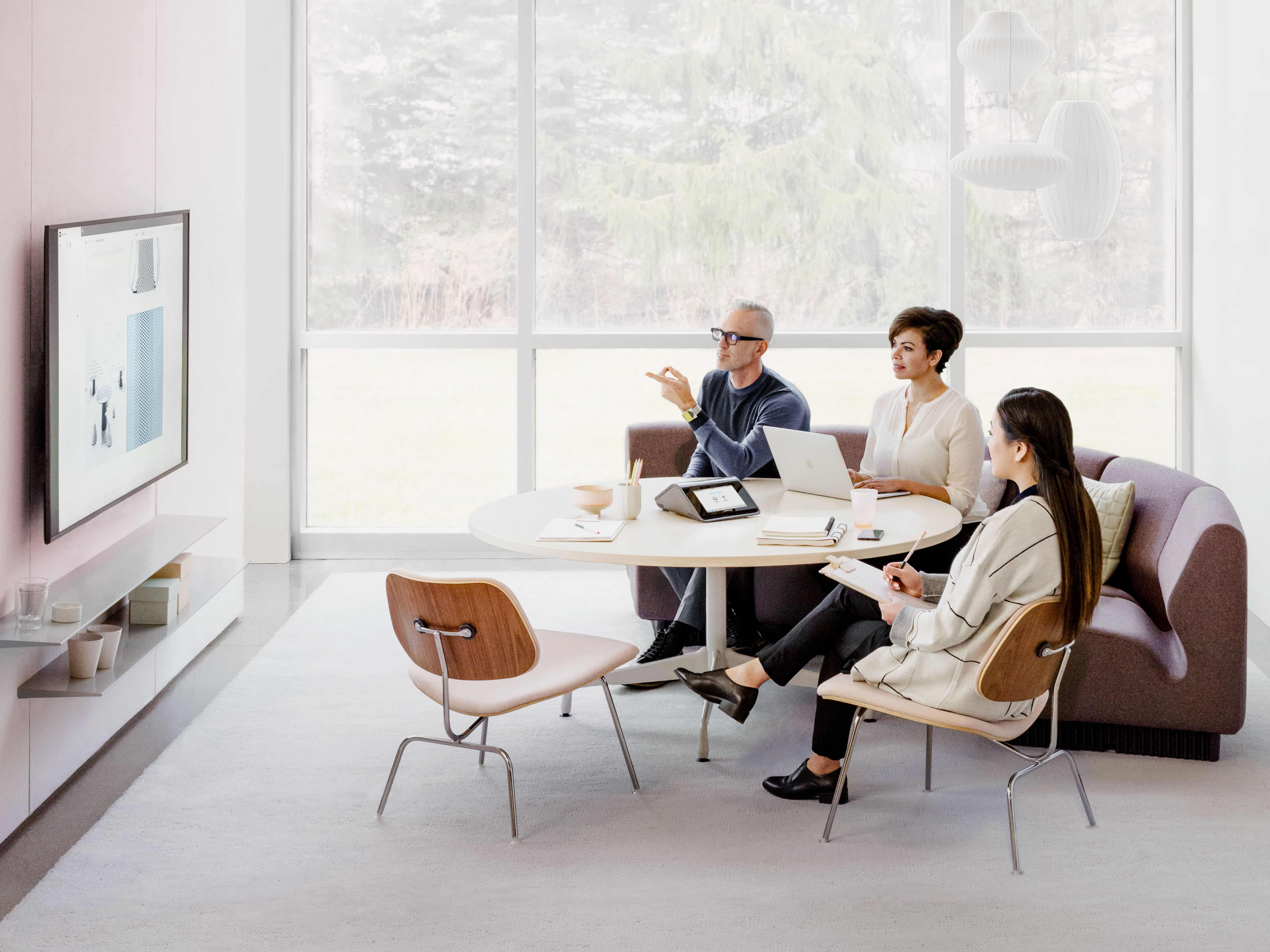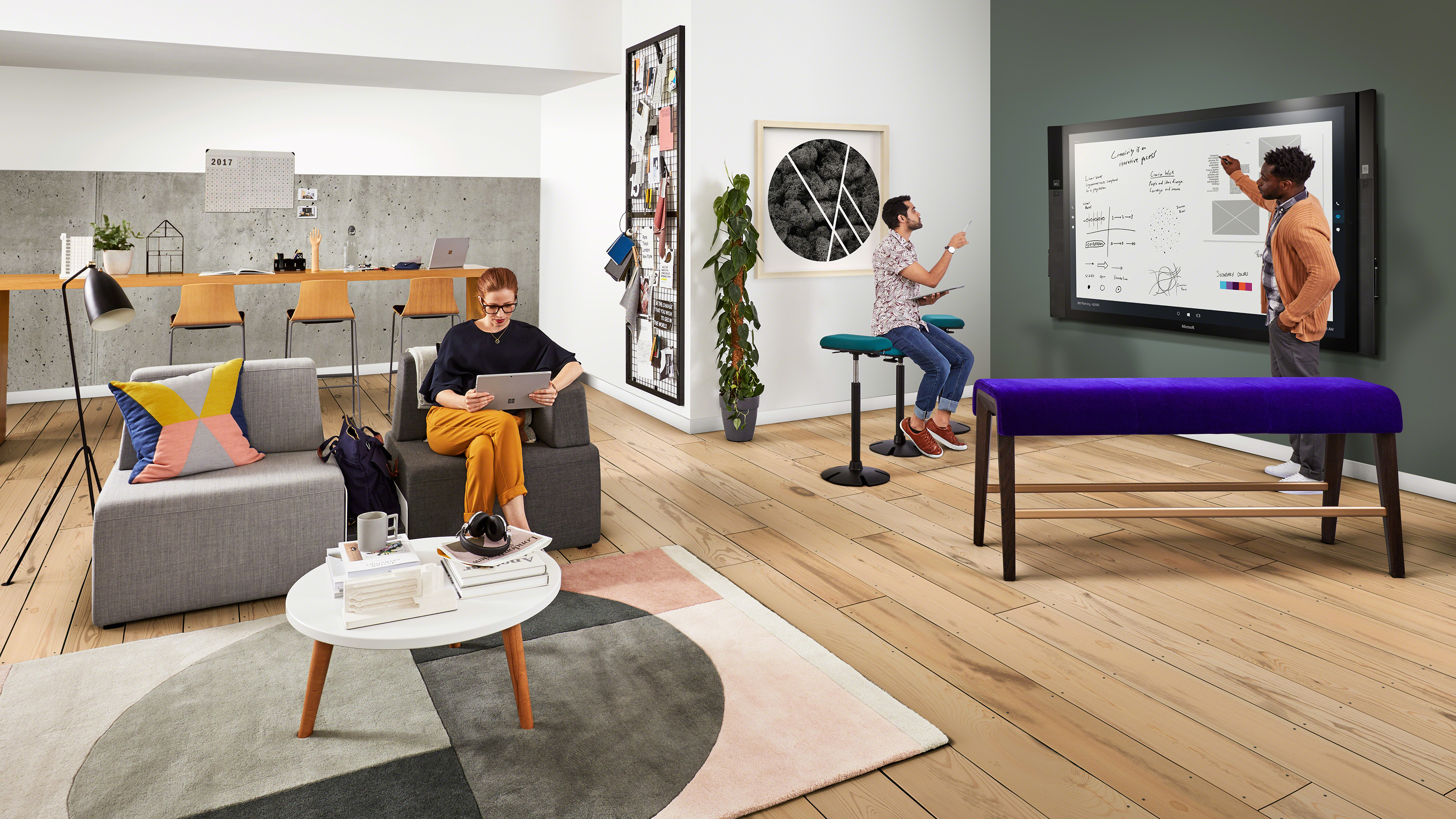AV Tech and Furniture
An Emerging Business Model with a Bright Future

It’s fairly obvious that corporate America is changing the way it works. To align with the industry shift to more collaborative work environments, the purpose and function of physical office spaces is in need of an overhaul. Many of us find ourselves in less-than-modern workspaces that were designed for outdated process-based working.
An office space gets new furniture and a coat of paint, perhaps in an attempt to modernize; the AV team typically rolls in with the equipment after the office redesign. They interrupt sight lines, cut holes in furniture, and mount things in strange places out of necessity. Many of these challenges could be resolved if technology providers had a voice on the design team, and got involved earlier in the process.
In 2015, AVIXA launched a study called the “Exceptional Experience.” After gathering data and analyzing workflows, the study concluded that the modern workspace should be the perfect fusion of space, content, and technology. A few forward-thinking AV professionals took this study to heart and are setting the bar for a new brand of partnership between AV technology and office furniture design.
A Common Starting Point
Technology and furniture design both begin with the same goal: to maximize and optimize end user experience. Bringing together these two very different disciplines has allowed industry innovators to forge new ground through unexpected partnerships. The goal is to create beautifully designed spaces that function well.
George Meglio, director of workplace technology at dancker, explained, “I joined dancker because of the opportunity to change how things have always been done. I see the benefit we bring to clients by providing solutions where space, furnishings, and technology are all designed together.”
AV integrator Whitlock’s Modern Workplace Practice includes a certification program. There is similar outreach to the architectural and design communities. Many large players—Barco, Logitech, Crestron—take part, supporting the effort and remaining actively involved in making sure their offerings fit into larger customer solutions.
The cornerstone of Whitlock’s initiative is its partnership with Herman Miller. Julian Phillips, executive vice president at Whitlock, was inspired to explore a potential partnership after reviewing the 2015 Exceptional Experience study referenced earlier.
A daily selection of the top stories for AV integrators, resellers and consultants. Sign up below.
[SCN Hall of Fame 2019: Julian Phillips]
Both companies are well known in their respective industries; they are now working together to explore the possibilities of combining ergonomic furniture and state-of-the-art technology. The partnership architects agreed a long-term partnership would deliver the best chance of success, so in 2018 the parties signed a 10-year agreement.
“Whitlock is Herman Miller’s technology partner for Living Office Settings, which is a holistic approach to developing and deploying surroundings, furnishings, and technology in one process and as one team,” Phillips said. “We have learned a lot together—specifically, that the days of just adding AV technology to a room at the end [of the design stage] are over.”

Best Practices: Start Early and Question Everything
Industry experts agree that when furniture manufacturers and technology providers work together, there are a few essentials necessary to provide winning results to the customer.
Start early. Herman Miller has data indicating that project costs are inflated 10 to 15 percent by change orders and change control, most the result of poor planning. Having all essential players engaged from day one, and for the duration of the project, means that impacts can be mitigated early on.
Be inclusive. Have end users on the team to help all parties understand how the spaces need to function. Solving problems at the design stage rather than during execution makes for a more efficient project. End user experience should drive the project.
Question everything. In doing so, you will uncover every nuance and need of the space, reaching beyond the obvious. Phillips said that 95 percent of projects typically involve some legacy environment or technology, so there will be special considerations.

Martin Avila, vice president of office furniture manufacturer Seville Classics, noted, “It’s important to start by identifying and understanding the end users. Identify their work environment, their demographics, and their current office furniture. Assess current equipment to observe if some standing desk configurations may be more optimal than others. While standing desks and sit-stand workstations both support an ergonomic workspace, one style may be a better fit for a new installation when compared to a retrofit/office upgrade.”
On the tech side, Phillips agreed that asking the right questions is key. “Don’t just ask them what they want,” he said. “Observe behaviors within the organization by a thorough discovery process. Look at the data and workflows. Talk to the tech managers about usage data in a given space. Through this discovery, we, as experts, can embrace an environment that facilitates productivity for them, whatever that looks like. It can often be even better than what they thought they needed.”
Building a Partnership with a Furniture Manufacturer
This is new territory for most technology companies, so it’s important to find the right partner for a successful outcome. As an industry, thinking out of the box and learning how to partner effectively is critical. When in new territory, fluidity and flexibility are important.
Meglio pointed out that technology changes at a rapid pace, so prepare furniture partners to react and keep up with that pace. Data and analytics will inform the workspaces of the future.
“There is not a one-size-fits-all in the technology world,” Meglio said. “Client needs guide us to the proper solutions, and then to the best-in-class vendors to provide these services. Our partner criteria includes companies with qualified design teams, effective deployment, and day two support services.”
Meglio pointed to the Steelcase + Microsoft partnership as one that has been transformational in the industry. “These two have taken the lead in designing furniture and technology solutions that meet the needs of the modern workplace while driving a higher return on their investments.”
On the furniture side, Avila describes his partnership process. After completing analysis to determine the type of workstation most appropriate for the implementation, the next step is to assess a potential manufacturer’s current customer base to look for similar clients. Do that manufacturer’s designs have any customer feedback about what’s working and what isn’t? Do they have the variety of solutions to meet our needs? These are the crucial questions that drive a project.
A New Model
If integrators are already successfully deploying AV-as-a-Service models for other agreements, it makes sense to explore the possibilities of expanding that model. Whitlock offers a Collaboration as a Service business model. They expanded this idea in conjunction with Herman Miller, and recently rolled out their Workplace as a Service model. Training, service, and support for the lifetime of that environment are covered, and there is some flexibility in the fee structure to allow for upgrades to both furniture and technology as needed.
In observing this emerging area of potential partnerships, Meglio said, “It’s no longer a nice to have; it’s becoming a must-have.”
The lines continue to blur between technology, workspace environments, design, and architecture. One thing is certain: when everyone involved is putting the end user needs first and working together to make it happen, it’s better for both the customer and for the industry.
Camille Burch is a creative thinker, marketing strategist, and award-winning writer. She is the current editor of Digital Signage Magazine.

